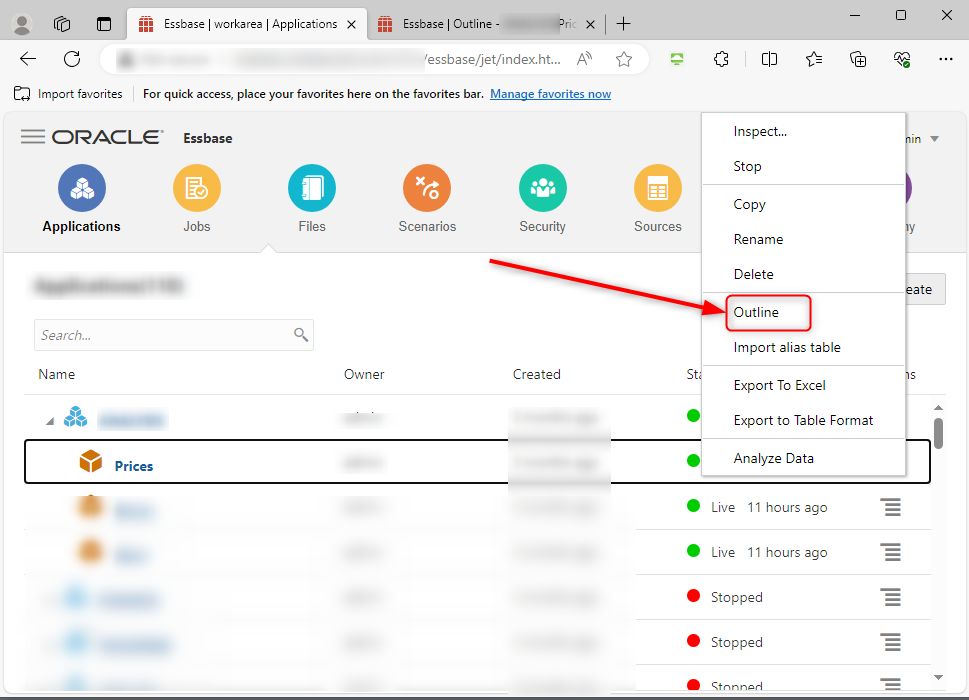Share this
The technical and functional impact of Oracle HFM 11.2.15
In this article, we’ll take a look at the technical and functional impact of Oracle HFM 11.2. What are the consequences for your landscape? And should you make the switch to the latest version 11.2.15?

As we all know, Oracle HFM 11.2 is the successor to version 11.1.2.4 and has both functional changes and technical modifications. In Q3, 2023 Oracle released the latest version of Oracle EPM version 11.2.15. This version brings some interesting changes regarding Essbase, HFM and the technology behind the products.
In order to be able to test the new version and all modifications thoroughly, we have installed this new version in our test lab. In the following articles we will keep you informed of our test results. But first, we’ll look at the technical and functional consequences. What is the impact of Oracle HFM 11.2.15 on your environment?
Technical impact of Oracle HFM 11.2.15
Let’s start with the most important questions;
1. Should I switch to HFM 11.2.15?
2. If so, can I upgrade my environment to the latest version of 11.2.15 or do I have to do a new installation?
3. I'm switching to the latest version of Windows. How will this impact my HFM application?
4. How do I avoid security issues?
The answer to these questions is different for each situation. We're happy to advise you, please contact us to get advice for your specific situation.
Request your free consultation
Functional impact of Oracle HFM 11.2.15
You’ll find the same significant changes in this version as in the first release of 11.2.
The first major change is that Oracle EPMA (Enterprise Performance Management Architect) no longer exists. As a result, metadata can no longer be modified via the dimension library. Oracle offers 2 alternatives for this. The first alternative is to go back to “classic”, which means that you need the old HFM client to edit metadata. The second alternative is DRM (Data Relationship Management); Oracle offers a stripped-down version of the DRM tool for this, where you can maintain the metadata.
The removal of EPMA seems to be a major change and we will investigate how this will work out. Fortunately, Oracle has already indicated that there will be an update with a metadata editor in the workspace. In theory, this seems to be the best option.
A second adjustment is a new configuration item, which allows you to determine the number of parallel calculations or consolidations. This number defaults to 8, meaning you can run up to 8 calculations in parallel. The next started calculation is then postponed until there is space again. With this setting, the load on the server can be partially controlled. This feature can be used to improve the overall performance of HFM.
A third major change concerns the task audit. It now shows much more information. Consider, for example, who opened or closed which journal periods and who locked or unlocked which data for a scenario, period, or entity.
A fourth big change is Essbase. With version 11.2.15, Essbase will go through a major change and a lot needs to be adapted. With previous versions of 11.2, Essbase would still use the 11.1.2.4.xxx version. With the latest patch of 11.2.15, Essbase will upgrade to version 21c. This means, for example, that you need to change the way you do outline changes.

Also, please keep in mind that if you audit a lot, the performance can be reduced. Contact us for a smart solution to avoid performance issues.
Testing Oracle HFM 11.2.15
Of course, we have carefully investigated HFM 11.2.15 in our test environment, so that we can identify the advantages and disadvantages. Discover the results of our HFM 11.2 tests.
More info?
Discover the benefits of our support for Oracle EPM/ Hyperion and our EPM Support Services.
Text: Gabor Wieringa
Share this
- November 2025 (2)
- April 2025 (2)
- March 2025 (2)
- February 2025 (2)
- December 2024 (1)
- July 2024 (3)
- April 2024 (2)
- March 2024 (1)
- February 2024 (1)
- January 2024 (3)
- December 2023 (1)
- June 2023 (1)
- April 2023 (1)
- March 2023 (1)
- December 2022 (1)
- September 2022 (1)
- August 2022 (2)
- February 2022 (1)
- December 2021 (1)
- May 2021 (15)
- April 2021 (24)
